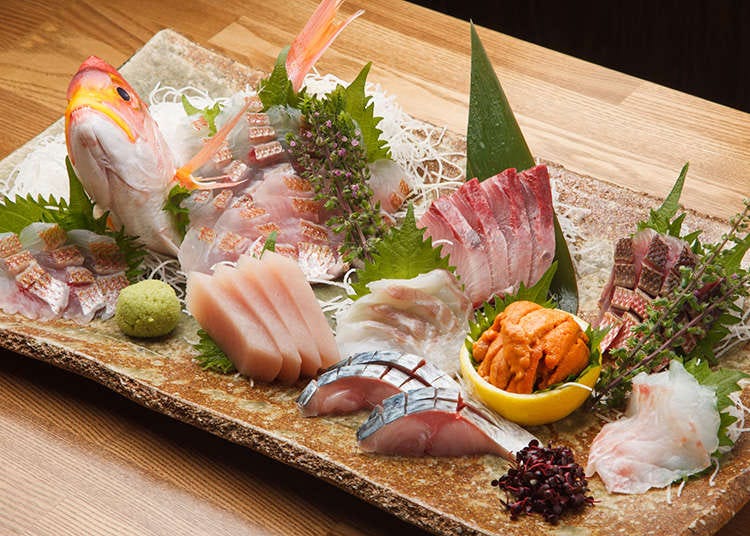Unveiling the Hidden Gems: A Foodie's Guide to Japanese Cuisine in the City

Introduction to Japanese Cuisine
Japanese cuisine is known and loved worldwide for its delicate flavors, exquisite presentation, and emphasis on freshness. Rooted in centuries-old traditions, Japanese cuisine encompasses a wide range of dishes, from sushi and sashimi to ramen and tempura. The culinary artistry of Japanese cuisine lies in its ability to balance taste, texture, and visual appeal.
One key characteristic of Japanese cuisine is its focus on seasonal ingredients. The Japanese have a deep appreciation for the natural flavors of each season, with dishes often showcasing the bounty of ingredients available during that particular time of year. This commitment to using fresh, seasonal produce ensures that each dish is bursting with flavor and nutritional value.
Another hallmark of Japanese cuisine is its emphasis on simplicity. Many traditional dishes are prepared with minimal ingredients and cooking techniques in order to bring out the natural essence of the ingredients. Whether it's a bowl of miso soup or a plate of sashimi, the flavors are clean, subtle, and harmonious, allowing the natural flavors of the ingredients to shine through.
Furthermore, presentation is of utmost importance in Japanese cuisine. The Japanese believe that a dish should not only taste good but also look visually appealing. Careful attention is paid to arranging each component of a dish, with an emphasis on creating a harmonious balance of colors, textures, and shapes. This meticulous attention to detail elevates the dining experience, making every meal not just a feast for the taste buds but also for the eyes.
Japanese cuisine also offers a wide variety of dining experiences, from casual street food stalls to high-end Michelin-starred restaurants. Whether you're grabbing a quick bite at a ramen shop or indulging in a multi-course kaiseki meal, you can be sure to find something to satisfy your taste buds and culinary curiosity.
In this guide, we will delve into the hidden gems of Japanese cuisine in the city, exploring the lesser-known culinary delights that are waiting to be discovered. From hole-in-the-wall sushi joints to authentic izakayas, we will take you on a gastronomic journey to uncover the rich tapestry of flavors that Japanese cuisine has to offer. So, get ready to embark on a culinary adventure and experience the wonders of Japanese cuisine right in your city.
Sushi Delights: A Journey through the City's Best Sushi Bars
When it comes to Japanese cuisine, sushi is often the first thing that comes to mind. The city is home to a plethora of sushi bars that offer an incredible array of flavors and textures. From traditional nigiri sushi to creative rolls, sushi lovers are in for a treat.
- Sushi Bar A
Sushi Bar A is a hidden gem located in the heart of the city. With its intimate atmosphere and skilled sushi chefs, it offers an authentic sushi experience. The menu includes a wide variety of sushi options, from classic favorites like tuna and salmon to more adventurous choices like uni (sea urchin) and toro (fatty tuna). Be sure to try their hand rolls, which are made with the freshest ingredients and bursting with flavor.
- Sushi Bar B
Sushi Bar B is known for its innovative approach to sushi. The chefs here experiment with unique flavor combinations and presentation. You'll find rolls that are topped with unexpected ingredients like truffle oil and foie gras, creating a fusion of Japanese and Western influences. Don't miss out on their specialty rolls, which are a feast for the eyes and the taste buds.
- Sushi Bar C
Sushi Bar C is a favorite among locals for its affordable yet delicious sushi. Here, you can indulge in a variety of sushi rolls without breaking the bank. The menu offers a great selection of both traditional and contemporary options, ensuring that there is something for everyone. Don't forget to sample their sashimi platter, which showcases the freshest slices of raw fish.
- Sushi Bar D
Sushi Bar D takes pride in sourcing the finest ingredients to create sushi that is both exquisite and flavorful. The chefs here pay meticulous attention to detail, ensuring that each piece of sushi is a work of art. From their delicate nigiri sushi to their intricate rolls, every bite is a taste sensation. Be prepared to be transported to sushi heaven at this exclusive sushi bar.
Embarking on a sushi journey through the city's best sushi bars is a sensory adventure that promises to delight food enthusiasts. Each sushi bar brings its own unique style and flavor combinations, ensuring that no two experiences are alike. So, grab your chopsticks and prepare to indulge in the finest sushi the city has to offer.
Ramen Galore: Experiencing the Rich Flavors of Japanese Noodle Soup
Japanese cuisine is renowned for its variety and impeccable flavors, and one dish that stands out among all is ramen. A steaming bowl of ramen is a gastronomic delight, encompassing a melange of flavors that captivate the taste buds.
In the city, ramen lovers can embark on a delectable journey, discovering the hidden gems that serve this beloved Japanese noodle soup. From traditional tonkotsu ramen to innovative vegetarian options, there is a ramen joint for every palate.
- Tonkotsu Ramen: Indulge in the rich and creamy goodness of tonkotsu ramen. This style features a pork bone broth that has been simmered for hours, resulting in a velvety texture and deep umami flavor. Topped with tender slices of pork, crunchy bamboo shoots, and a perfectly boiled egg, this classic ramen never fails to satisfy.
- Shoyu Ramen: For those who prefer a lighter yet equally flavorful option, Shoyu ramen fits the bill. Made with soy sauce-based broth, this variety showcases a well-balanced combination of savory and slightly salty flavors. It is typically garnished with toppings like seaweed, green onions, and delicate slices of cha-shu (roasted pork).
- Miso Ramen: If you're looking for an explosion of umami, miso ramen is the way to go. The rich and hearty miso broth is the star of this dish, delivering a delightful blend of fermented soybean flavors. The toppings can vary, but it often includes bean sprouts, corn, and marinated bamboo shoots.
- Vegetarian Ramen: Embracing dietary preferences, many ramen joints now offer vegetarian options that don't compromise on taste. These bowls are filled with an array of colorful vegetables, tofu, and a flavorful vegetable broth. From miso-based to soy-based variations, vegetarians can also enjoy the distinct flavors of ramen.
- Spicy Ramen: For those craving a fiery kick, spicy ramen delivers the perfect punch. Typically featuring a tantalizing blend of chili and other spices, this variation brings an added element of excitement to the bowl. Be prepared to have your taste buds tingle with each slurp of this zesty ramen.
Whether you're a ramen aficionado or simply curious to explore the wonders of Japanese cuisine, the city offers an abundance of exceptional ramen spots. From traditional recipes to inventive twists, these hidden gems ensure that every bowl of ramen is a memorable experience for food enthusiasts. So, embark on a culinary adventure and savor the rich flavors of Japanese noodle soup.
Izakaya Adventures: Exploring the City's Japanese Pub Scene
When it comes to Japanese cuisine, the city boasts a vibrant and exciting izakaya scene. Izakayas are traditional Japanese pubs, where locals gather to enjoy delicious food and drinks in a relaxed and convivial atmosphere. These establishments offer a unique dining experience, as they often serve a variety of small, shareable plates known as "izakaya-style" dishes.
One of the highlights of exploring the city's izakaya scene is the opportunity to taste a wide array of authentic Japanese dishes. From yakitori (grilled skewered chicken) to takoyaki (octopus-filled dough balls), there is something to satisfy every palate. Many izakayas also specialize in serving fresh sushi and sashimi, allowing patrons to indulge in the freshest fish and seafood.
In addition to the delectable food, izakayas are also known for their extensive drink menus. They offer a diverse selection of Japanese sake, shochu (a distilled spirit), and a variety of local and international beers. For those looking for a more adventurous experience, there are also specialty cocktails that showcase unique Japanese ingredients and flavors.
Exploring the city's izakaya scene is not just about the food and drinks, but also about immersing oneself in Japanese culture. The interior design of these establishments often reflects traditional Japanese aesthetics, with low tables and floor seating arrangements. It is common to find friendly and welcoming staff who embody the polite and attentive nature of Japanese hospitality.
To experience izakaya adventures in the city, it is recommended to venture beyond popular tourist areas and explore neighborhoods where locals gather. These hidden gems often offer the most authentic and memorable experiences. From the lively streets of Shinjuku to the historic alleys of Asakusa, there is an izakaya waiting to be discovered around every corner.
Whether you're a foodie seeking new culinary experiences or simply looking for a vibrant and lively evening out, the city's izakaya scene is sure to satisfy. So grab some friends, immerse yourself in the warm ambiance of an izakaya, and embark on a delicious adventure through the city's Japanese pub scene.
Tempura and Katsu: Indulging in Crispy Fried Goodness
Japanese cuisine is renowned for its delicate flavors and the artful presentation of dishes. Among the many culinary delights that Japan has to offer, tempura and katsu stand out as some of the most beloved. These crispy fried dishes are a testament to the craftsmanship and attention to detail that Japanese chefs bring to their cooking.
Tempura is a dish consisting of lightly battered and deep-fried seafood, vegetables, or even fruits. The key to a perfect tempura lies in its delicate, crispy coating and the ability to maintain the natural flavors of the ingredients. The batter, made from a simple mixture of flour, water, and sometimes eggs, must be carefully prepared to have the right consistency. It should be light and airy, allowing the ingredients to cook evenly and retaining their natural textures.
Traditionally, tempura is served with a dipping sauce called tentsuyu, made from soy sauce, mirin, and dashi. This sauce adds a savory depth to the already flavorful tempura. Tempura can be enjoyed as a standalone dish or as part of a larger meal, accompanied by rice and miso soup.
On the other hand, katsu refers to a breaded and deep-fried dish, typically made with pork or chicken. The meat is first tenderized, then coated in flour, beaten eggs, and crunchy breadcrumbs known as panko. The resulting katsu is crispy on the outside, while maintaining tenderness and juiciness on the inside. It is often served with a thick and tangy Worcestershire-based sauce, which perfectly complements the richness of the fried meat.
Katsu can be enjoyed in various forms, such as tonkatsu (pork cutlet) or chicken katsu. These dishes are commonly served as a main course, accompanied by rice, shredded cabbage, and miso soup. Katsu is a comfort food that satisfies both the palate and the appetite, making it a favorite among locals and tourists alike.
In Japanese cuisine, both tempura and katsu offer a delightful and indulgent experience. Whether you prefer the delicate crispiness of tempura or the hearty satisfaction of katsu, these fried specialties are a must-try for any food enthusiast. The next time you find yourself exploring a Japanese restaurant in the city, don't miss the opportunity to indulge in the crispy fried goodness of tempura and katsu.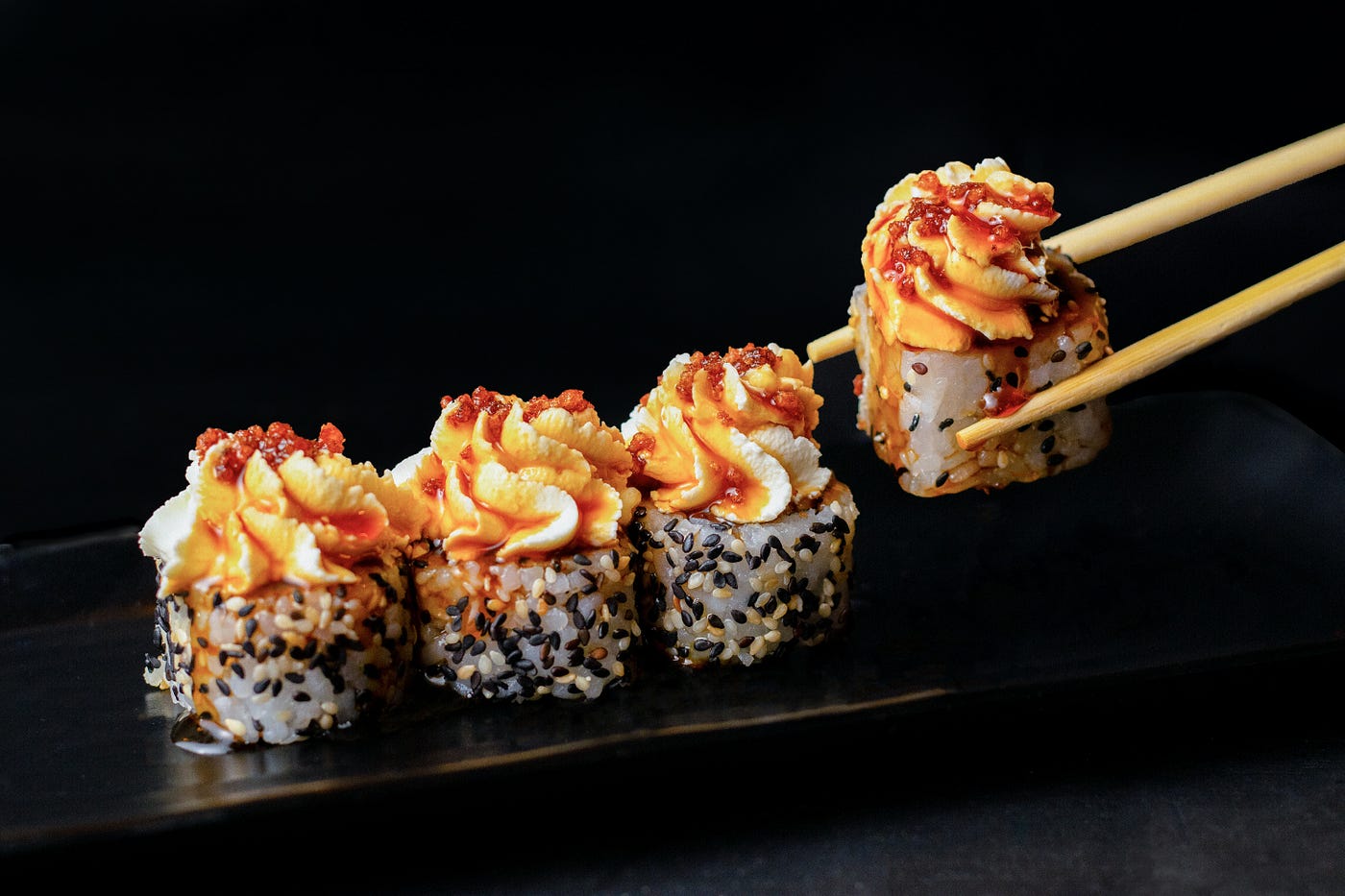
Savoring Japanese Street Food: A Culinary Exploration
Japanese street food, also known as yatai, offers a vibrant and exciting culinary experience for food enthusiasts. From the bustling streets of Tokyo to the quaint alleyways of Kyoto, exploring the world of Japanese street food is a must for any adventurous eater.
One of the most beloved street food dishes in Japan is takoyaki. These savory octopus balls are made from a batter of flour, eggs, and dashi stock, filled with tender pieces of octopus, and cooked in special takoyaki pans. Topped with a drizzle of sweet and savory takoyaki sauce, a sprinkle of bonito flakes, and a dollop of mayonnaise, these bite-sized delights are a true taste sensation.
Another popular street food dish is okonomiyaki, often referred to as a Japanese pancake or pizza. Made with a base of cabbage, flour, and eggs, okonomiyaki can be customized to suit any taste. It is typically topped with a variety of ingredients such as pork belly, seafood, cheese, and green onions. To add an extra burst of flavor, a generous amount of okonomiyaki sauce and mayonnaise is drizzled on top.
For those with a sweet tooth, taiyaki is a must-try Japanese street food. Taiyaki is a fish-shaped pastry filled with sweet red bean paste. The warm and crispy exterior pairs perfectly with the smooth and creamy red bean filling, creating a delightful combination of textures and flavors. Nowadays, taiyaki can also be found with alternative fillings such as custard, chocolate, and matcha.
A visit to a Japanese street food market would not be complete without trying yakitori. These skewered and grilled chicken pieces are a favorite among locals and tourists alike. Varieties of yakitori range from classic chicken thigh and breast to more adventurous choices like chicken liver, heart, or even cartilage. Glazed with a richly flavored tare sauce and served with a side of pickles, yakitori offers a delicious and convenient snack or meal option.
Lastly, no exploration of Japanese street food would be complete without indulging in a bowl of ramen. This iconic Japanese dish has become a global sensation, and it's easy to see why. Made with a flavorful broth, chewy noodles, and a variety of toppings such as pork belly, soft-boiled eggs, and seaweed, ramen truly satisfies the taste buds. Whether you prefer a rich and creamy tonkotsu ramen or a lighter and more refreshing shoyu ramen, there is a bowl of ramen out there to suit every palate.
In conclusion, Japanese street food offers a tantalizing adventure for food lovers. Whether you're savoring takoyaki, okonomiyaki, taiyaki, yakitori, or ramen, each bite immerses you in the rich and diverse culinary landscape of Japan. So next time you find yourself in a bustling Japanese city, make sure to carve out some time to explore the hidden gems of Japanese street food. Your taste buds will be eternally grateful.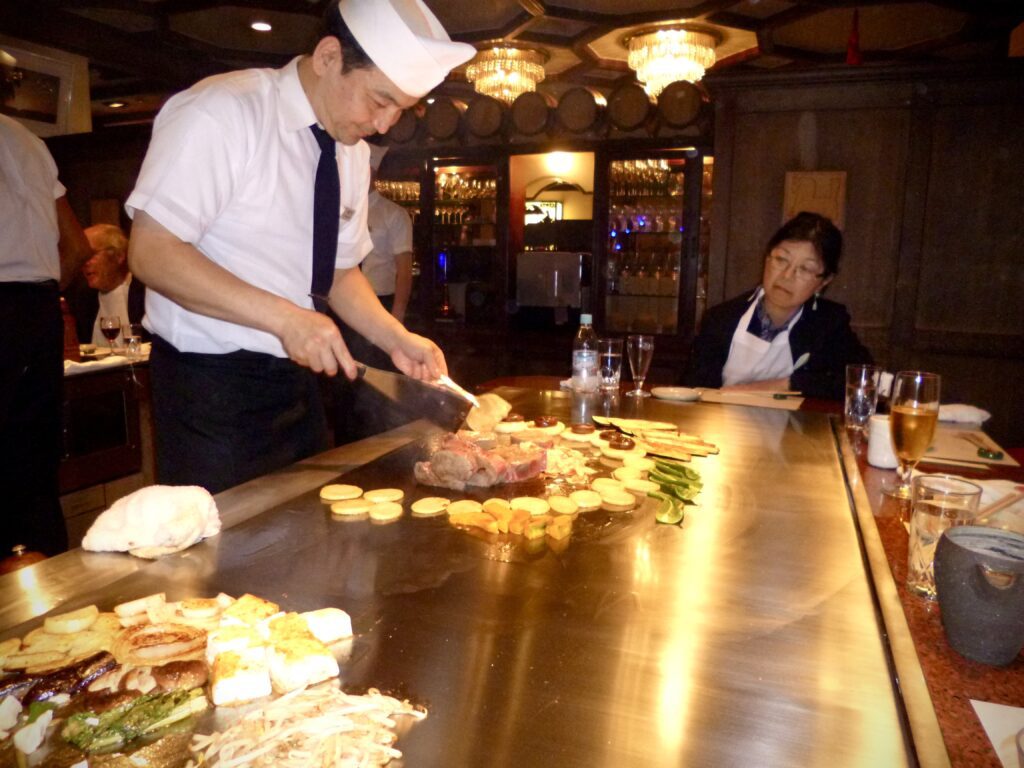
The Art of Teppanyaki: Dining at Live Cooking Stations
Teppanyaki, a style of Japanese cuisine, offers a unique and interactive dining experience at live cooking stations. This culinary art form originated in Japan and has gained popularity worldwide for its entertaining and delicious approach to preparing food.
At a teppanyaki restaurant, diners gather around a large griddle, where skilled chefs showcase their culinary expertise. The chefs skillfully chop, grill, and season ingredients right before your eyes, creating a mesmerizing performance. The sizzling sounds and aromatic smells add to the sensory experience, making dining at a teppanyaki restaurant an unforgettable event.
One of the highlights of teppanyaki is the opportunity to witness the precision and flair of the chefs. From expert knife skills to impressive spatula flipping, these talented individuals masterfully manipulate the ingredients, creating a truly captivating display. The combination of entertainment and delicious food makes teppanyaki a perfect choice for special occasions or a fun night out with friends and family.
Not only is teppanyaki an engaging experience, but it also offers a varied menu. A typical teppanyaki meal features a selection of meats, seafood, and vegetables. Guests can choose from options such as steak, shrimp, scallops, chicken, and an assortment of fresh vegetables. The chef will expertly cook each item to perfection, ensuring a delightful taste and texture.
Accompanying the main ingredients are flavorful sauces and seasonings, ranging from soy-based sauces to tangy and spicy options, which enhance the overall taste of the dishes. The chef's expertise in balancing flavors ensures a harmonious blend of umami, sweetness, and acidity in each bite.
Teppanyaki restaurants usually offer combination plates, providing a variety of proteins on a single platter. These plates allow guests to sample different flavors in one sitting and provide a great option for those who enjoy trying a bit of everything.
The communal dining atmosphere adds to the charm of teppanyaki. Sitting around the griddle with fellow diners encourages conversation and camaraderie, making it a social and interactive dining experience. It's the perfect opportunity to bond with friends or even strike up a conversation with strangers who share the same passion for good food.
Whether it's the visual spectacle of live cooking, the mouthwatering flavors, or the conviviality of the dining experience, teppanyaki offers a true feast for the senses. So, step into a teppanyaki restaurant and immerse yourself in the art of live cooking, as skilled chefs transform fresh ingredients into delectable dishes right before your eyes.
Discovering the Delicacy of Sashimi
Sashimi, a traditional Japanese dish, is a true delicacy that showcases the essence of simplicity and pristine flavors. It is a culinary art form that involves thinly sliced raw fish or seafood, served with soy sauce and wasabi. In Japanese cuisine, sashimi is highly regarded for its freshness, texture, and delicate taste.
To fully appreciate the delicacy of sashimi, it is important to understand the nuances and techniques involved in its preparation. The selection of fish is crucial, as only the freshest and highest quality fish are used. Chefs meticulously slice the fish to showcase its natural beauty and texture, ensuring a perfect balance between visual appeal and taste. Each type of fish requires specific knife skills and expertise to achieve the ideal thickness and shape.
One of the key aspects of sashimi is the accompanying sauce. Soy sauce is commonly used to highlight the natural flavors of the fish, while wasabi provides a subtle kick of heat. Additionally, pickled ginger is often served alongside sashimi to cleanse the palate between bites, enhancing the overall dining experience.
When indulging in sashimi, it is important to savor each piece slowly, allowing the flavors to unfold on the palate. The fish should be enjoyed as-is, without any additional condiments or toppings, to appreciate its true essence. The freshness and simplicity of sashimi make it a unique and unforgettable culinary experience.
Whether it's the buttery texture of fatty tuna (toro), the delicate sweetness of salmon, or the briny flavor of sea urchin (uni), sashimi offers a wide variety of taste sensations to explore. It is a testament to the intricate flavors and refined techniques of Japanese cuisine.
In conclusion, sashimi is not just a dish; it is an art form that reflects the elegance and precision of Japanese culinary traditions. The delicacy of thinly sliced raw fish combined with the right sauce and accompaniments creates a harmonious dining experience. Trying sashimi allows food lovers to discover the hidden gems of Japanese cuisine in their city, offering a taste of Japan's rich culinary heritage. So, next time you have the opportunity, dive into the world of sashimi and experience the magic firsthand.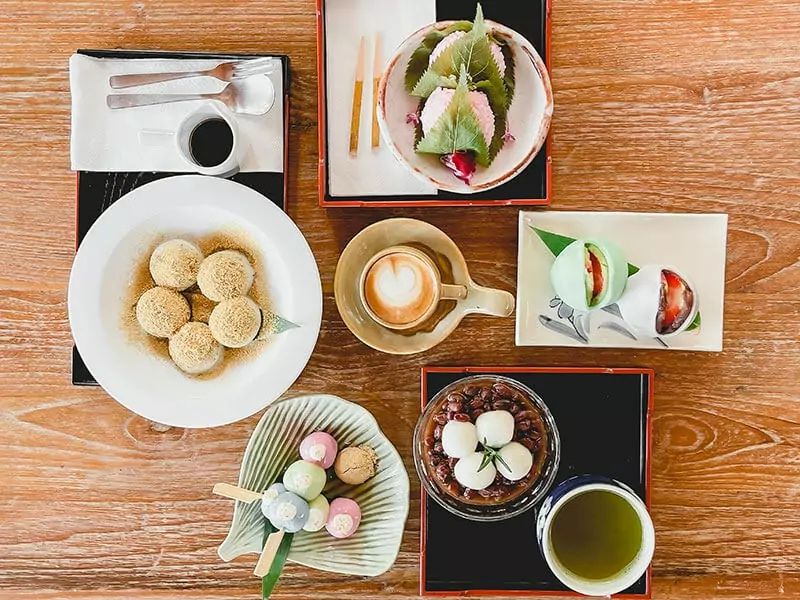
Traditional Japanese Desserts: A Sweet Ending to the Culinary Journey
Japanese cuisine is not just about savory dishes; it also boasts an array of delicious traditional desserts that are worthy of exploration. These sweet treats provide the perfect ending to a satisfying culinary journey through the flavors of Japan. Here are some of the must-try traditional Japanese desserts to satisfy your sweet tooth:
- Mochi: Mochi is a popular Japanese dessert made from glutinous rice. It has a soft and chewy texture and comes in various flavors like matcha, red bean, and strawberry. Mochi is often enjoyed during special occasions and has become a staple in Japanese dessert culture.
- Anmitsu: Anmitsu is a delightful dessert made with a combination of agar jelly, fruits, and red bean paste, served with a sweet syrup called mitsu. This colorful dessert is not only visually appealing but also offers a burst of flavors and textures.
- Dorayaki: Dorayaki is a well-loved dessert consisting of two pancakes filled with a sweet red bean paste called anko. This simple yet satisfying treat can be enjoyed as a snack or as a dessert after a meal.
- Taiyaki: Taiyaki is a fish-shaped pastry filled with sweet fillings such as red bean paste, custard, or chocolate. It is not only delicious but also a visual delight, often attracting both locals and tourists alike.
- Warabi Mochi: Warabi mochi is a jelly-like dessert made from bracken starch and covered with kinako (roasted soybean flour) or brown sugar syrup. It has a unique texture and a subtly sweet taste that is sure to tantalize your taste buds.
These traditional Japanese desserts are a testament to the country's culinary heritage and are worth exploring for any food lover. So, don't miss the opportunity to indulge in these sweet delights and experience the delightful flavors of Japan.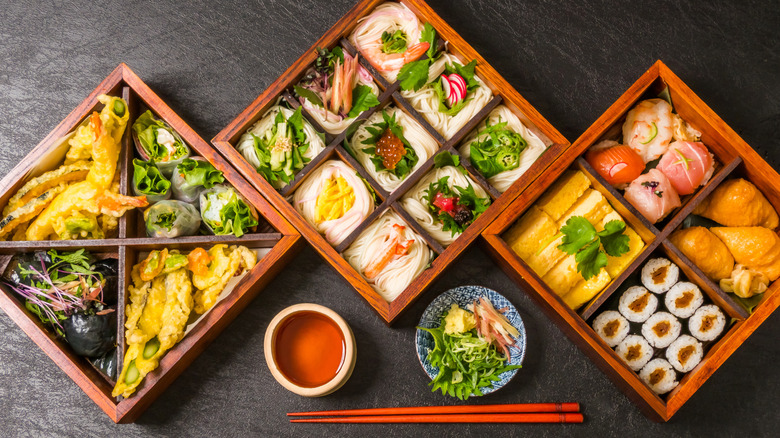
Bringing Home the Experience: Must-Try Ingredients and Cooking Tips for Japanese Cuisine
Japanese cuisine is known for its exquisite flavors, unique ingredients, and meticulous cooking techniques. If you're eager to recreate the authentic taste of Japan in your own kitchen, here are some must-try ingredients and cooking tips to help you on your culinary journey:
- Soy Sauce: A staple in Japanese cooking, soy sauce adds depth and umami to a variety of dishes. Opt for high-quality soy sauce, such as tamari or shoyu, for an authentic flavor profile.
- Mirin: This sweet rice wine is an essential ingredient in many Japanese dishes, including teriyaki and sukiyaki. Its delicate sweetness balances out the savory flavors and adds richness to sauces and marinades.
- Dashi: Considered the backbone of Japanese cuisine, dashi is a broth made from kombu (dried seaweed) and katsuobushi (dried bonito flakes). It forms the base for many soups, sauces, and stews, providing a subtle umami taste.
- Miso Paste: Made from fermented soybeans, miso paste is used to season soups, dressings, and marinades. It comes in different varieties, such as white, red, and barley miso, each offering distinct flavors and intensities.
- Wasabi: Known for its pungent heat, wasabi is a green horseradish paste traditionally served with sushi and sashimi. Use it sparingly to add a kick to your dishes, or mix it with soy sauce for a tangy dipping sauce.
When it comes to cooking, here are a few tips to help you perfect your Japanese culinary skills:
- Knife Skills: Invest in a good-quality Japanese chef's knife and practice your knife skills. Precision slicing and dicing are essential in Japanese cuisine to ensure even cooking and beautiful presentation.
- Rice Cooking: Learn the art of cooking Japanese rice to achieve the perfect fluffy texture. Use a rice cooker or follow the stovetop method, and remember to rinse the rice thoroughly before cooking to remove any excess starch.
- Tempura Technique: Master the art of tempura by ensuring your batter is light and crisp. Keep the batter chilled and use ice-cold water to achieve a delicate coating on your ingredients.
- Sushi Rolling: If you're feeling adventurous and want to try making sushi at home, practice the art of sushi rolling. Start with simple rolls using fresh ingredients, and gradually experiment with different fillings and techniques.
By incorporating these must-try ingredients into your pantry and honing your cooking techniques, you can bring the essence of Japanese cuisine into your own home, transporting yourself and your taste buds to the vibrant streets of Japan.




